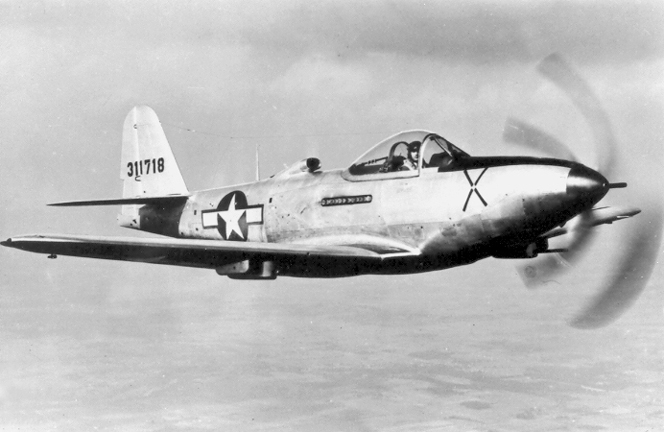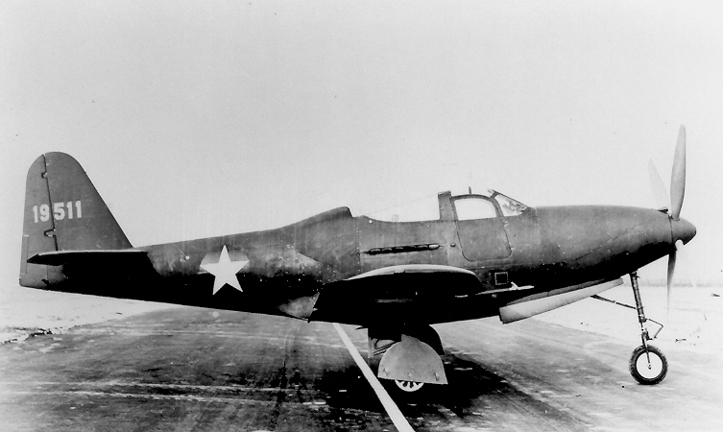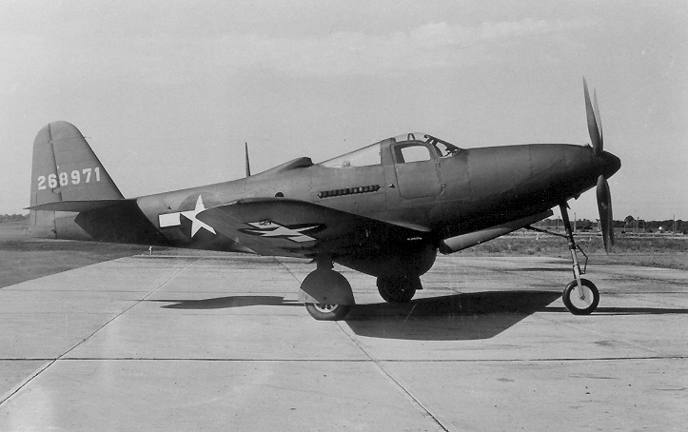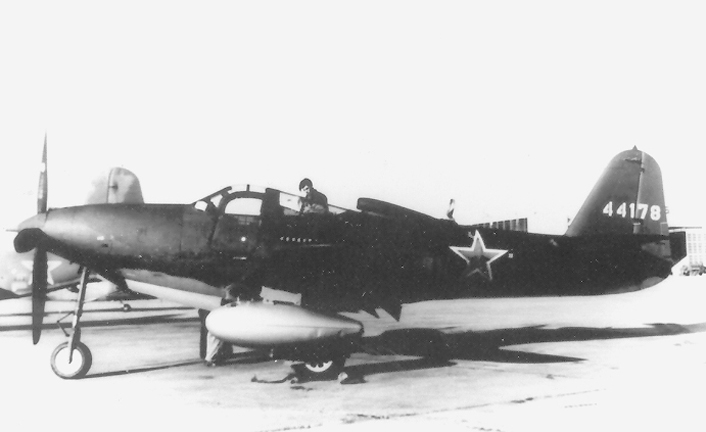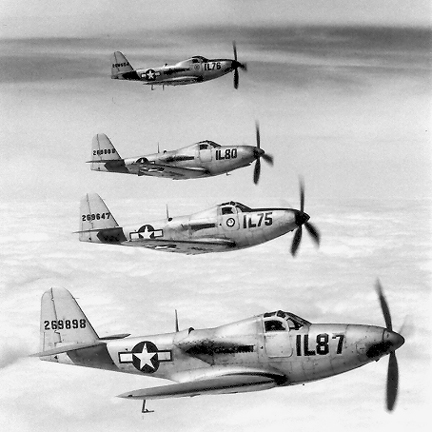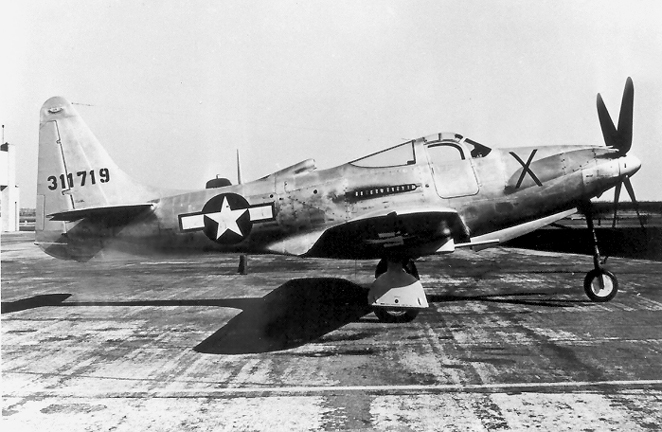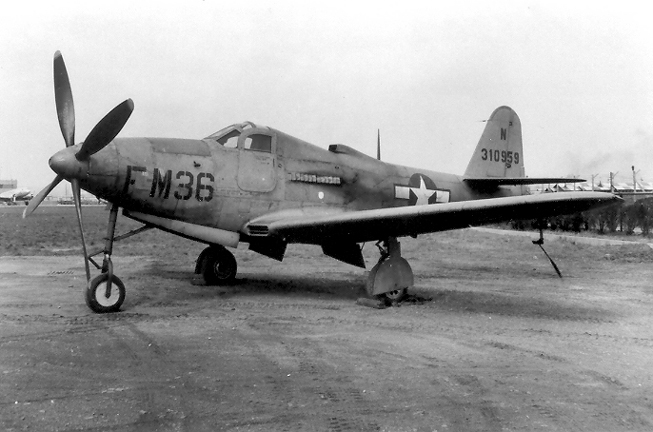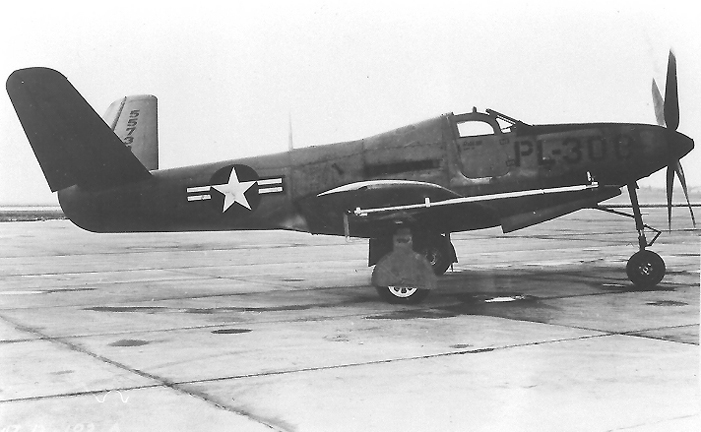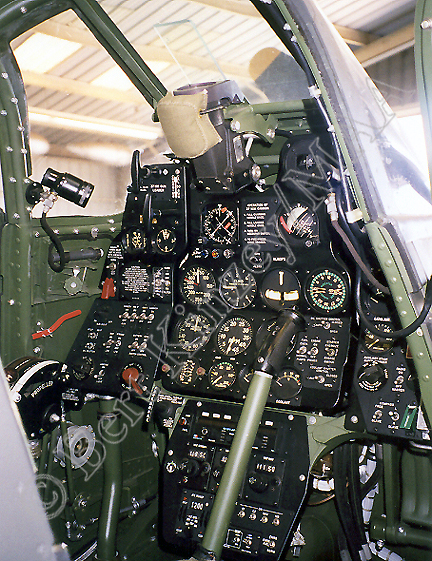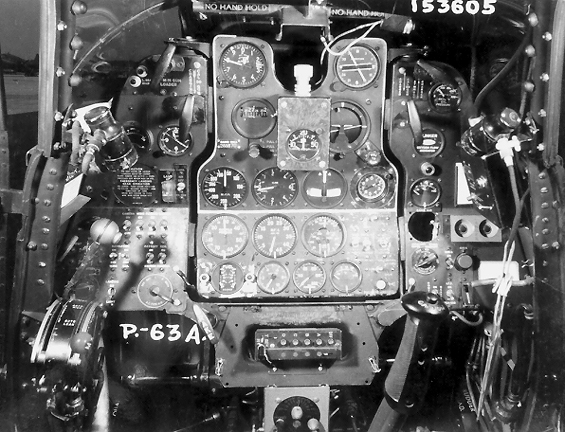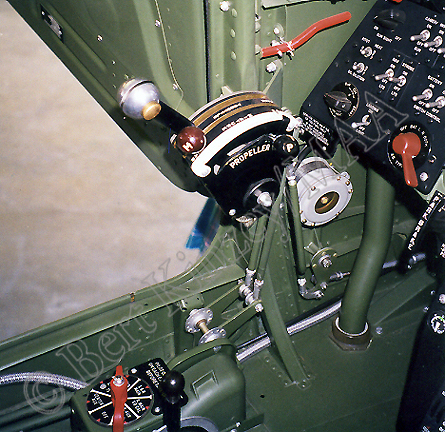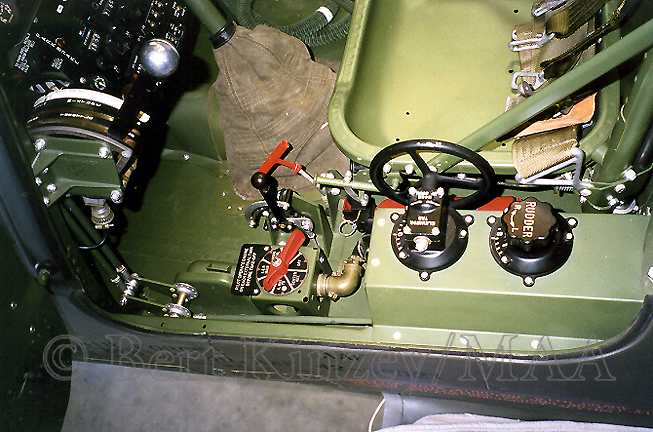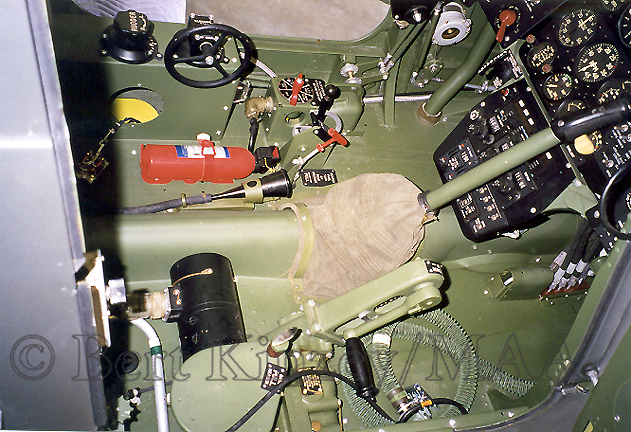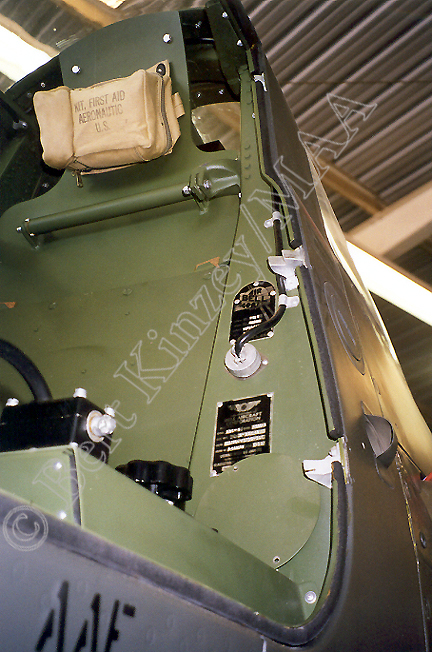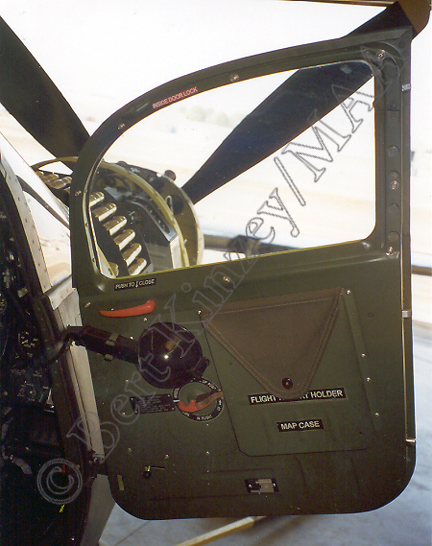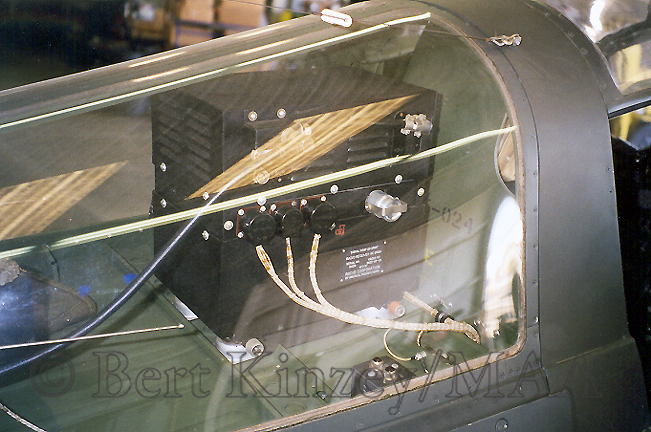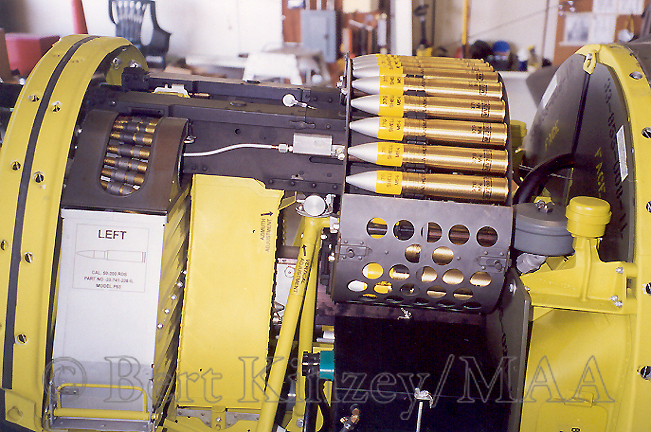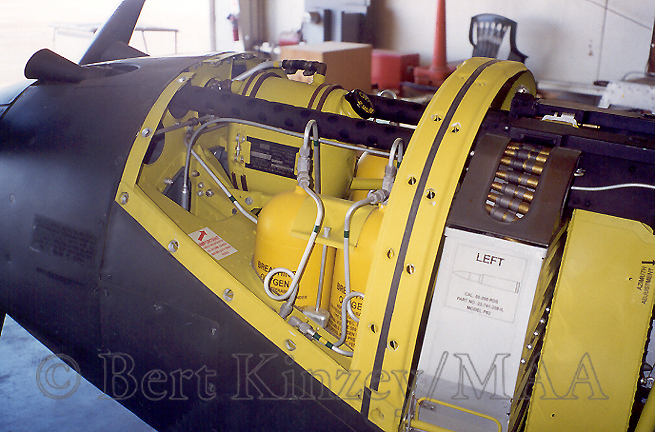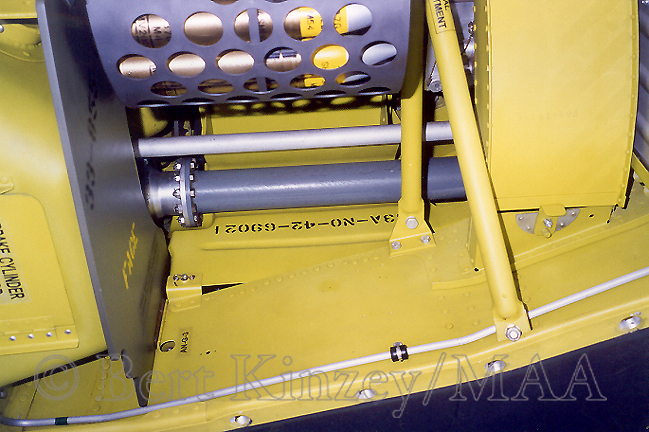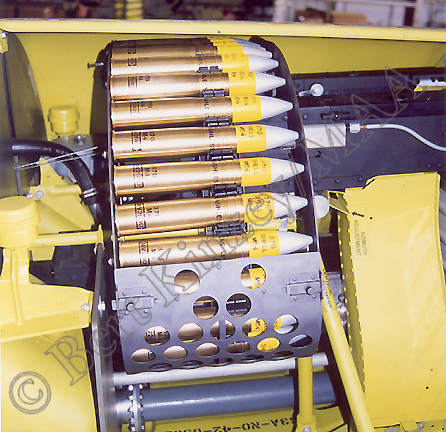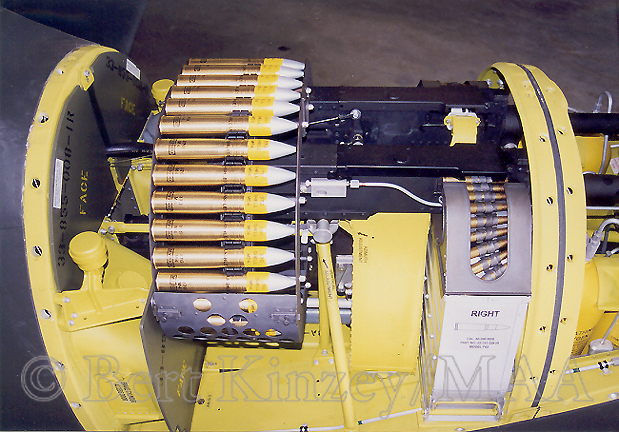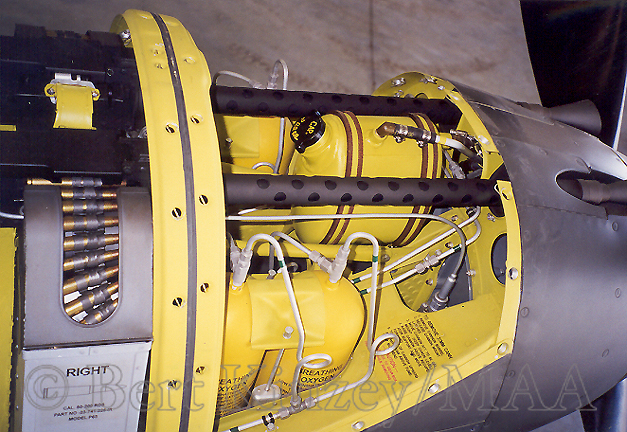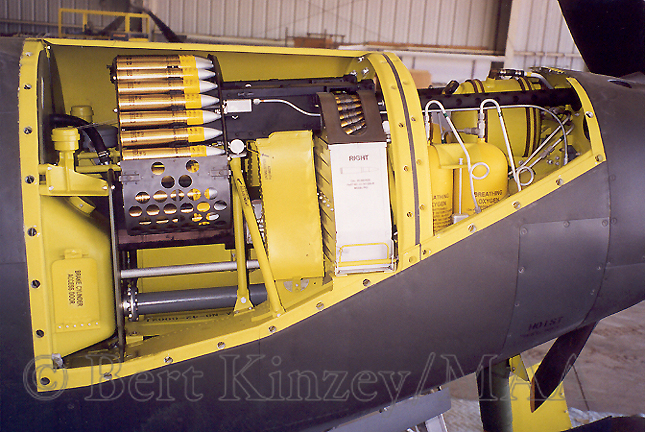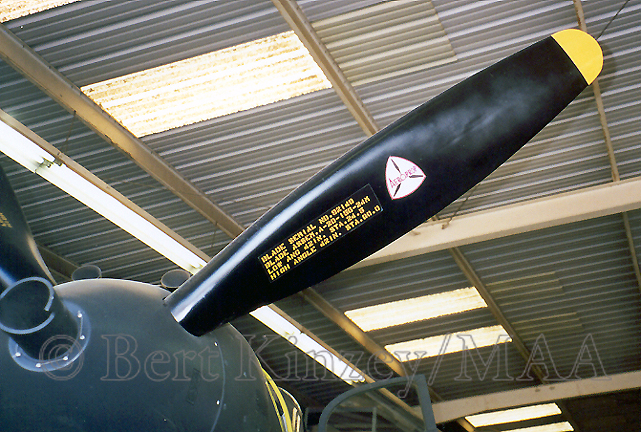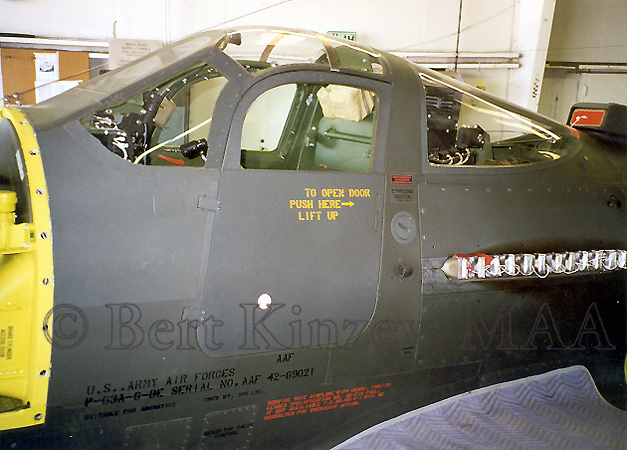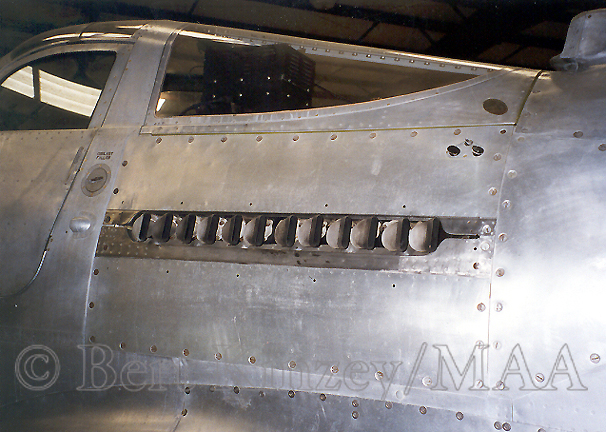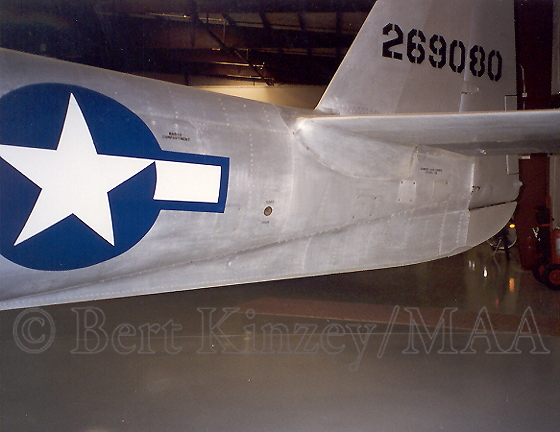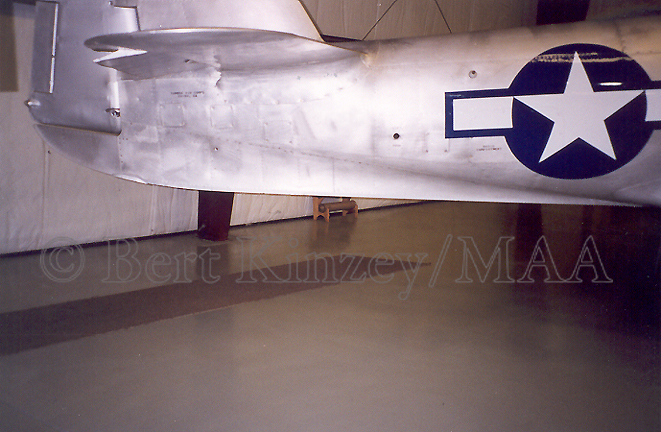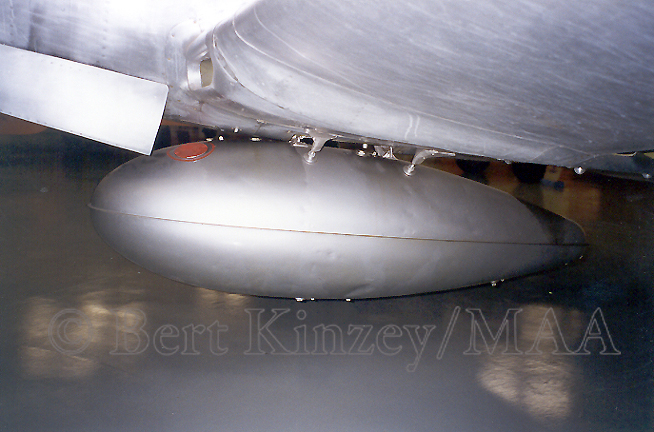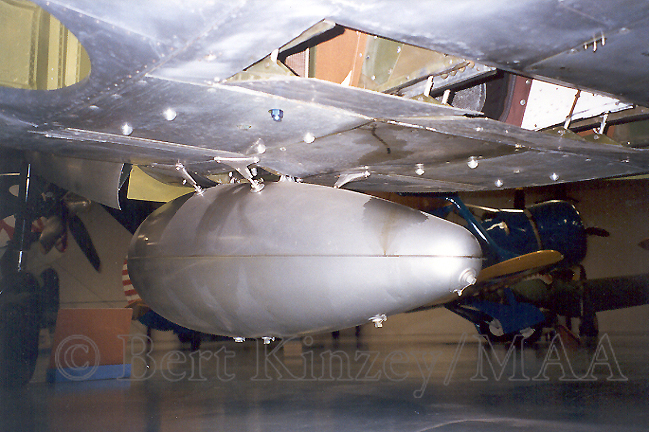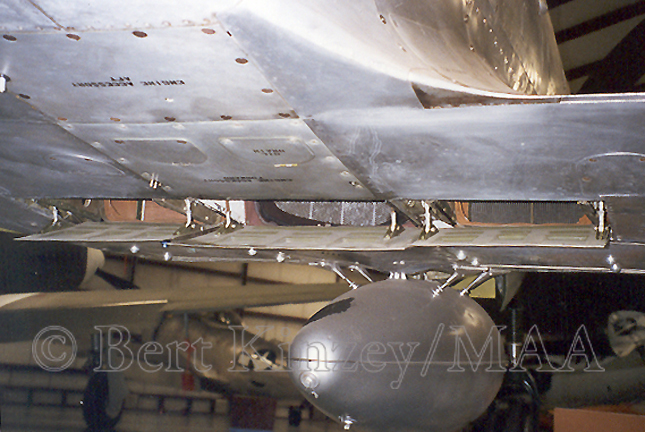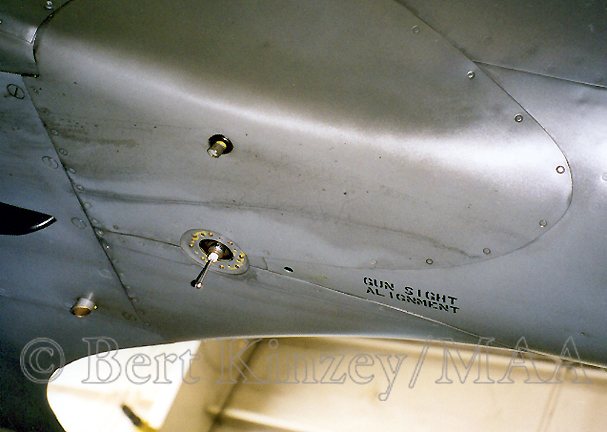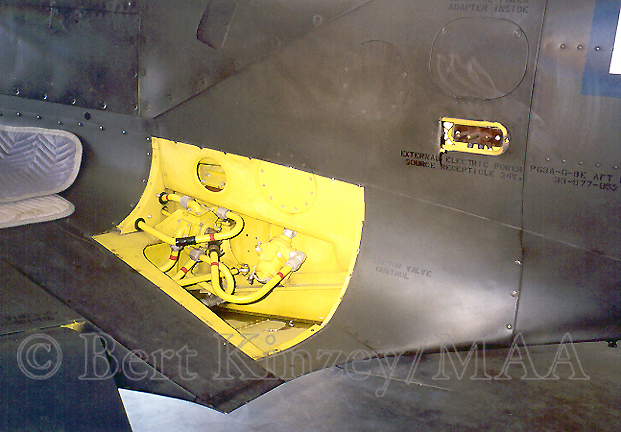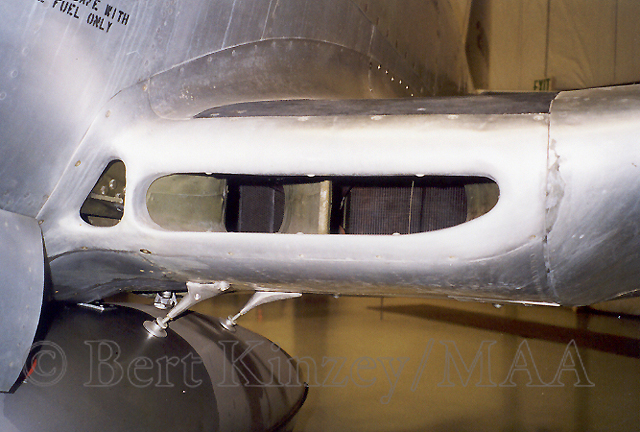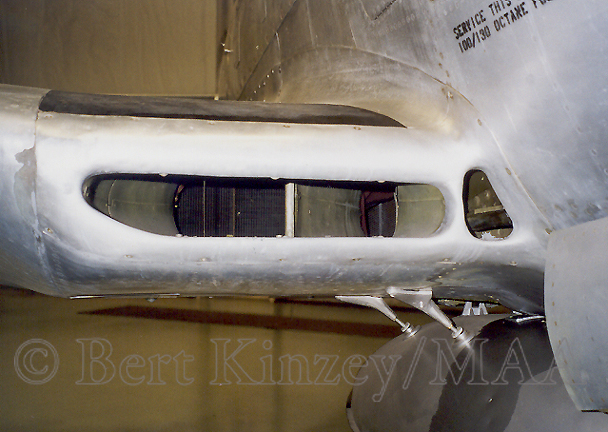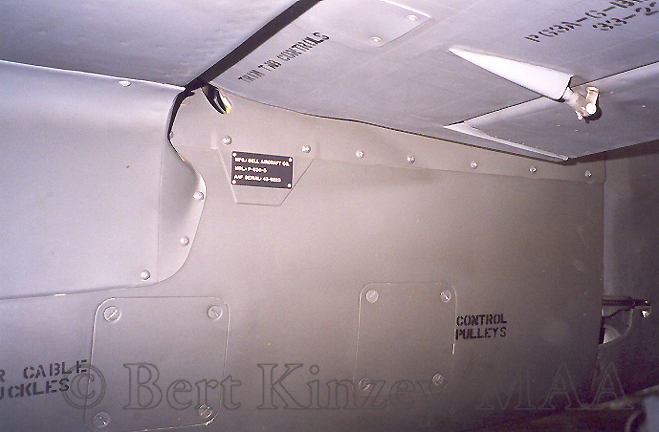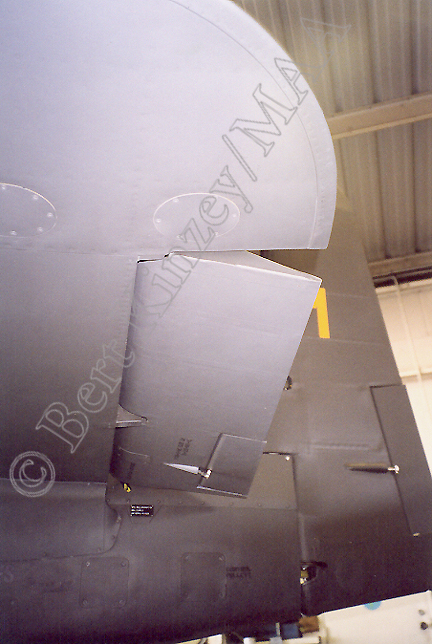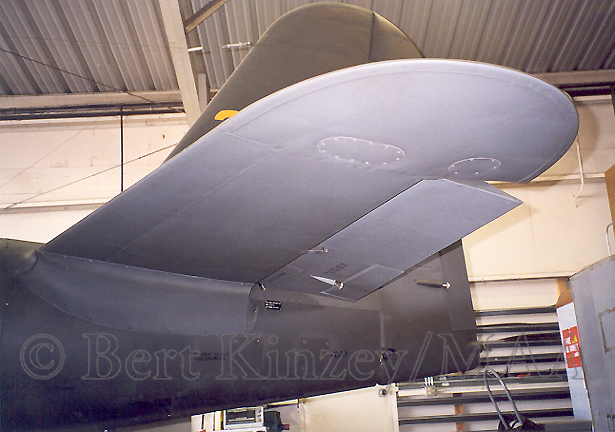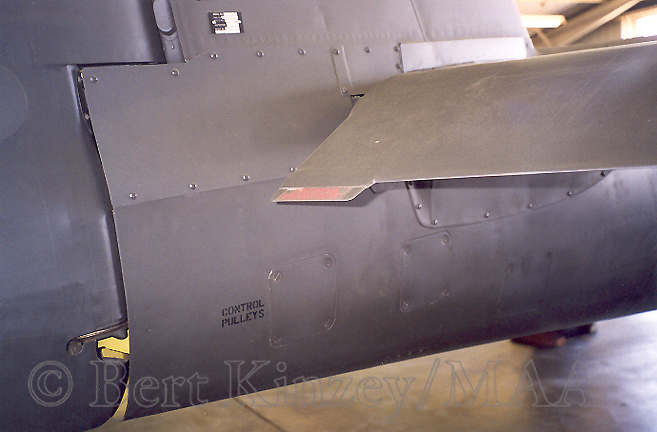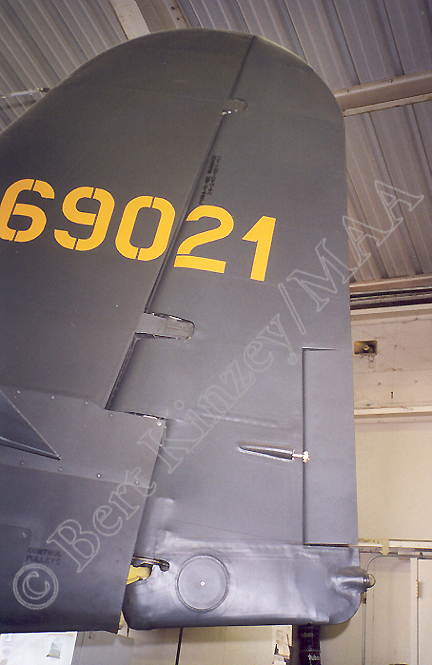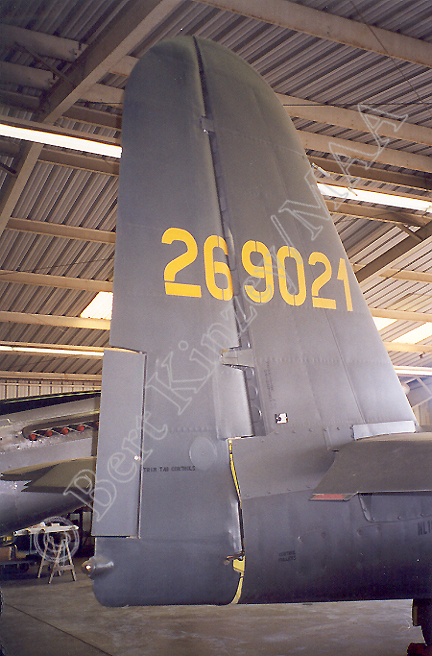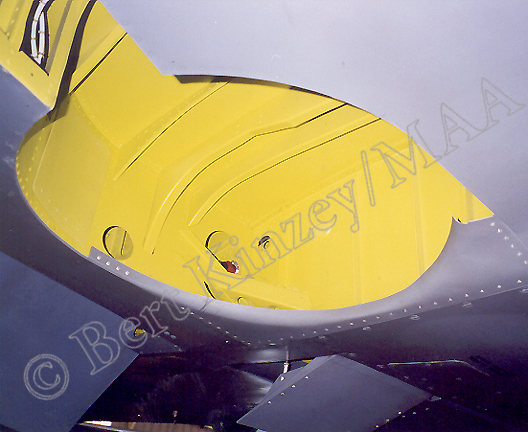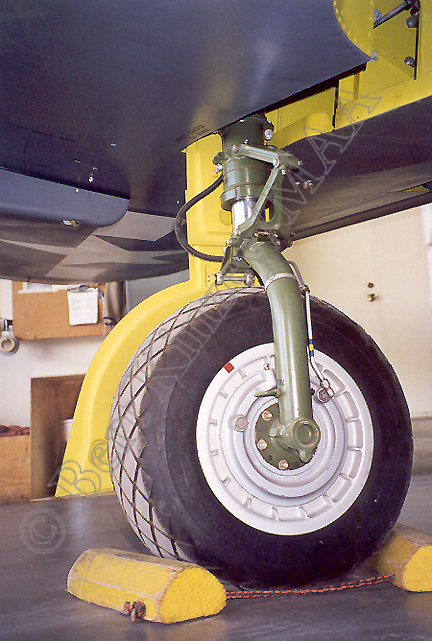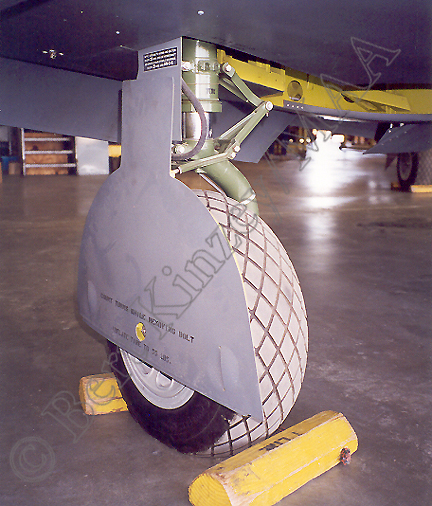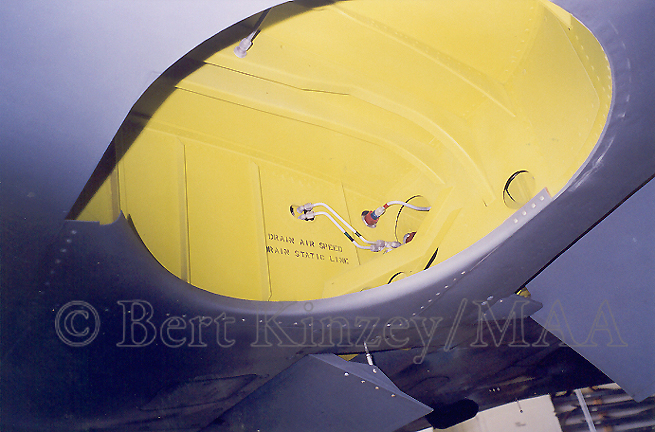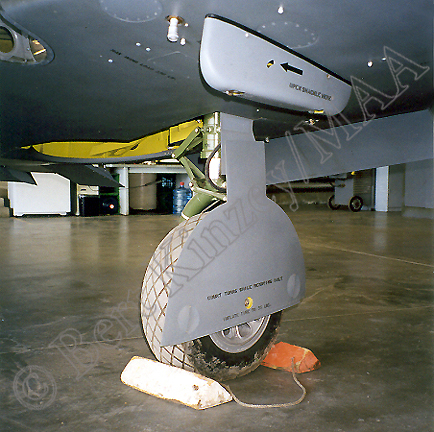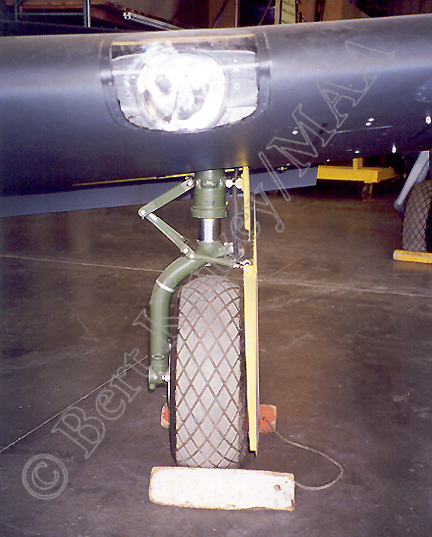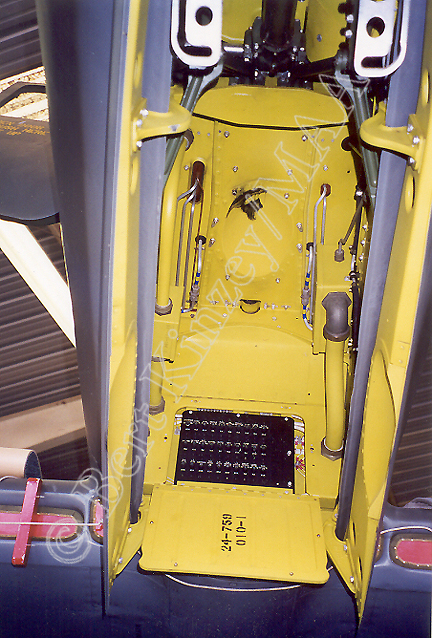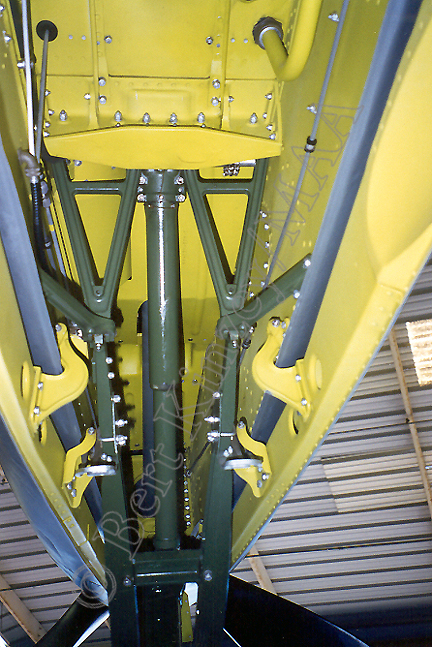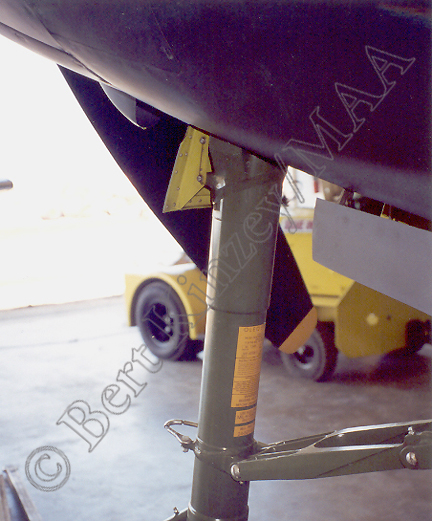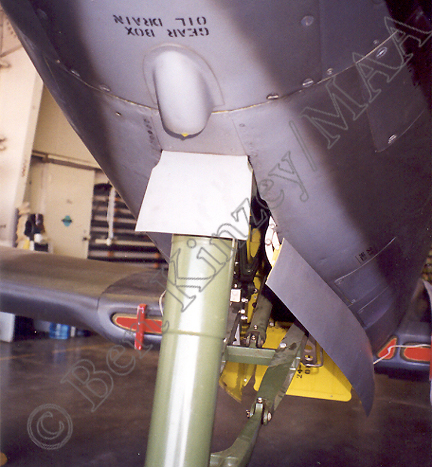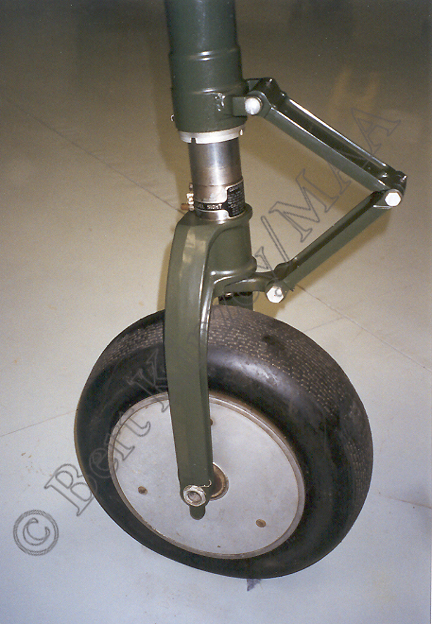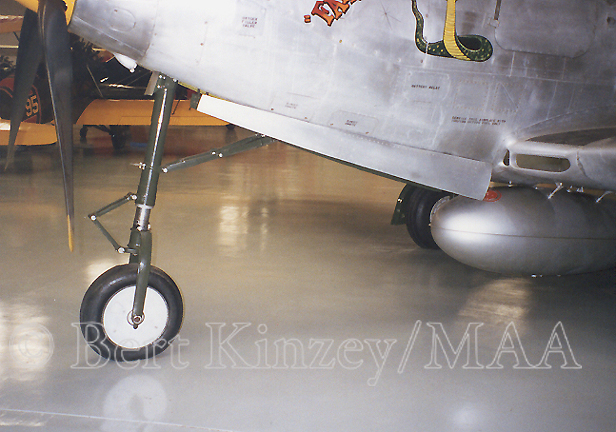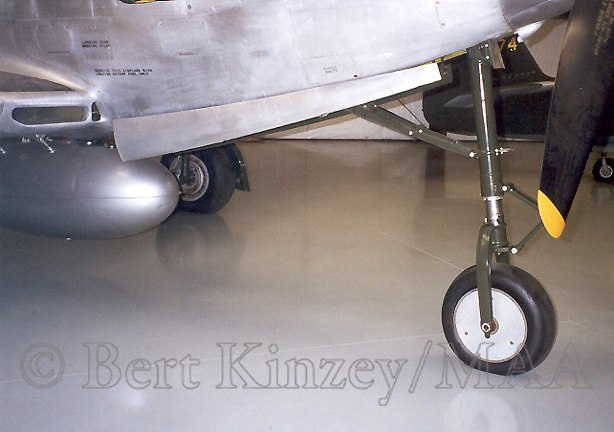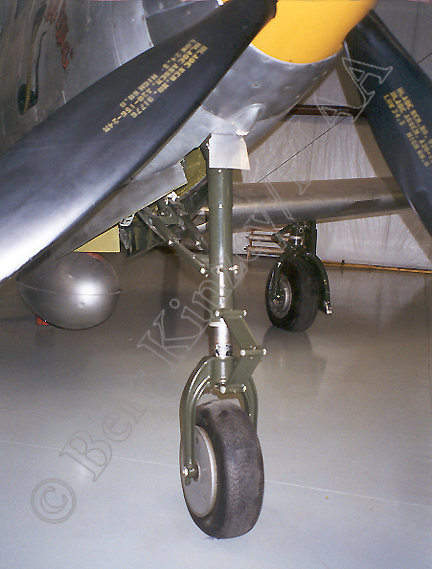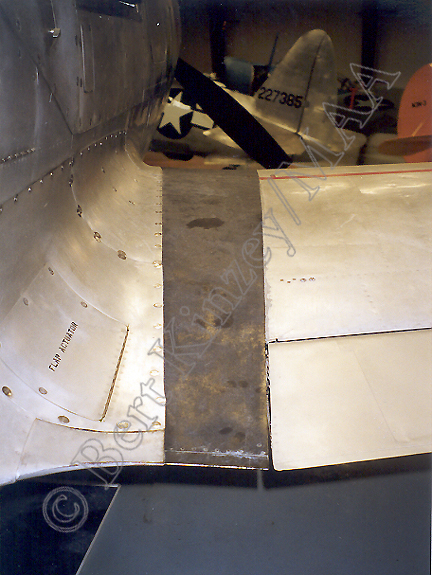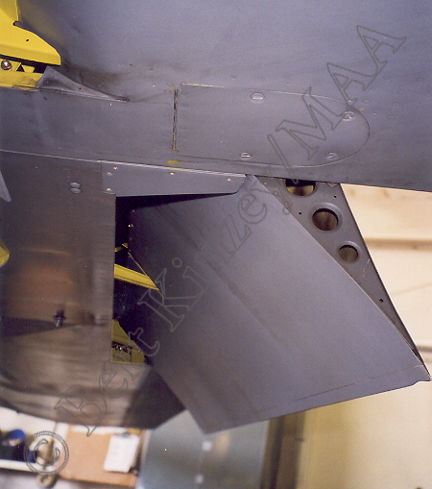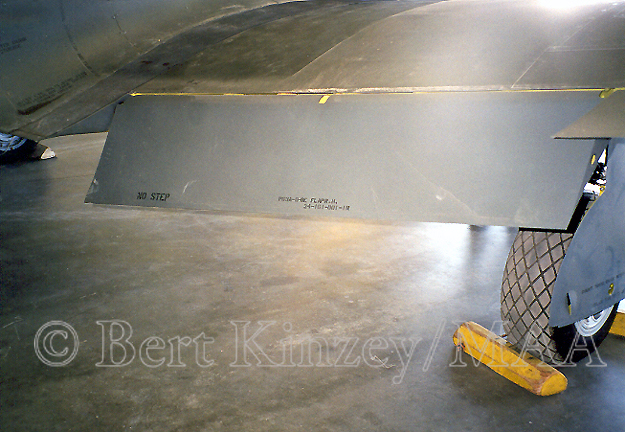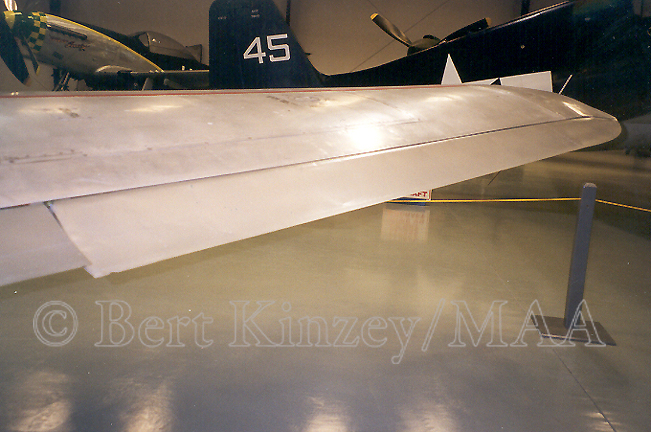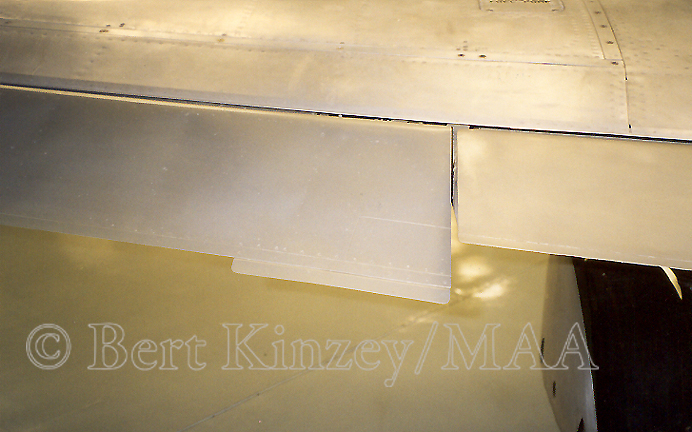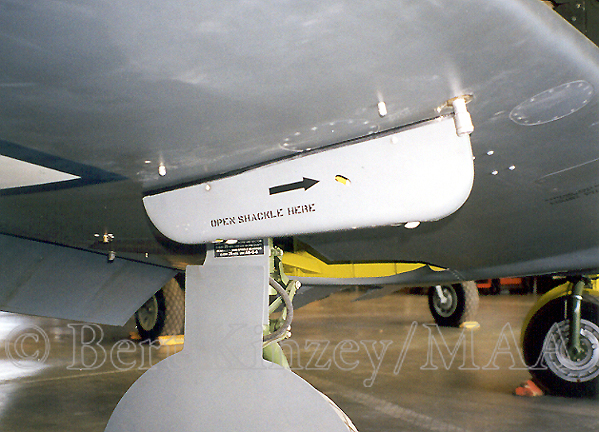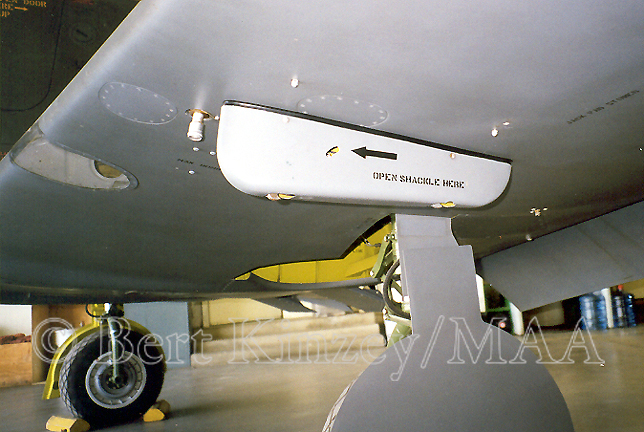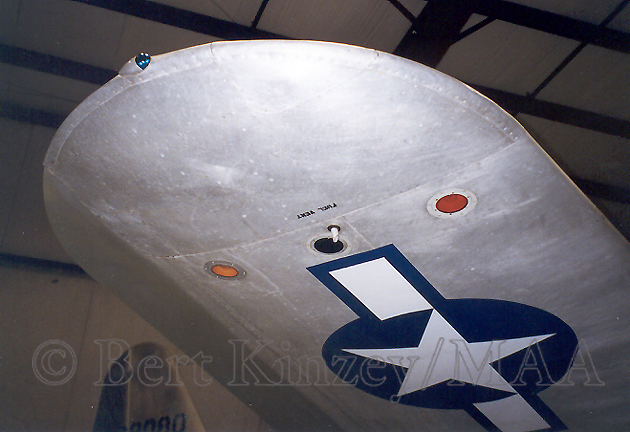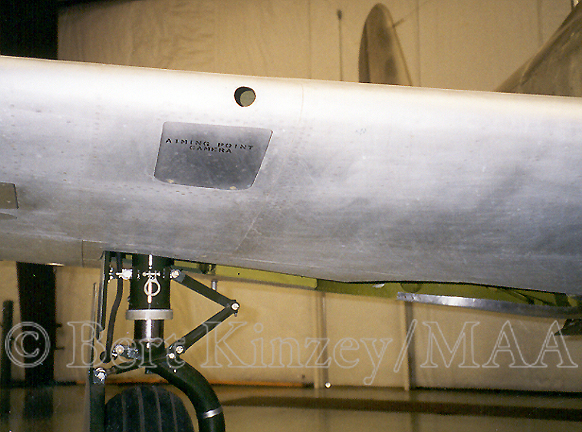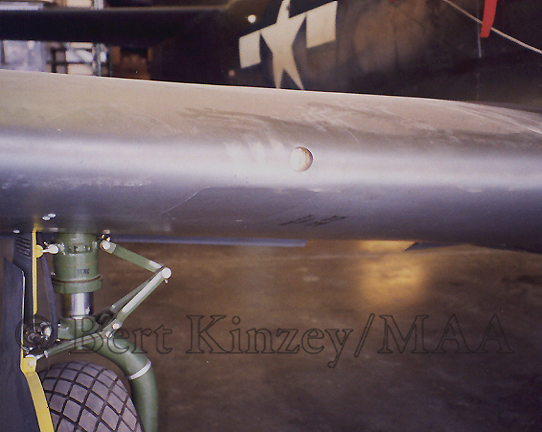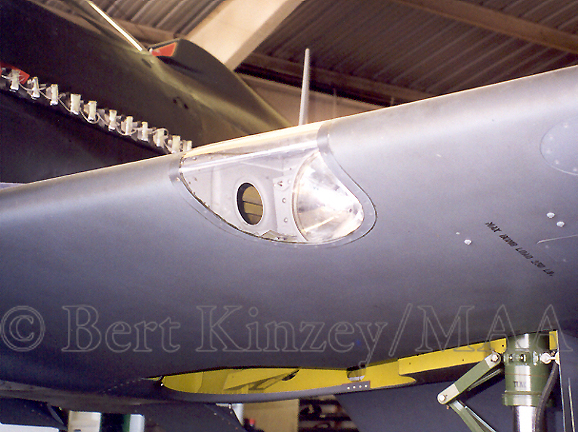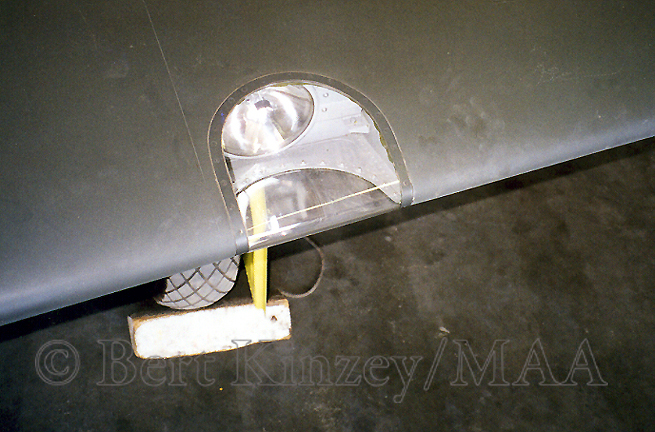P-63 Kingcobra Information File:
Bell Aircraft’s P-63 Kingcobra was a development of that company’s earlier and better known P-39 Airacobra. Although originally designed as a high-altitude pursuit fighter equipped with a supercharger, the U. S. Army decided to put the Airacobra into production without the supercharger installed. This severely limited the fighter’s performance at high altitudes and made it almost useless in the traditional fighter role. However, the fact that the aircraft was fitted with a 37-mm cannon made it an outstanding ground attack aircraft where excellent performance at high altitudes was not a requirement. When supplemented with .50-caliber machine gun fire, the 37-mm cannon shells could destroy even armored and hardened targets on the ground. The Airacobra was used successfully in this role in the Pacific by the U. S. Army Air Forces and the British, but it was the Russians who really appreciated the Airacobra’s strengths as a ground attack aircraft. They used it in large numbers and with great success against the German forces invading their country from the west.
Early experience with the Airacobra clearly illustrated the error of the Army=s decision to remove the turbo-supercharger. In February 1941, an improved design was proposed, and work began on what would become the P-63 Kingcobra. Much of the information used in its development came from the testing of three XP-39Es. A single XP-63 was ordered on June 27, 1941, but a second was added later. Both were converted from XP-39Es, while an XP-63A was built from the ground up. The first XP-63 made its maiden flight on December 7, 1942, with Bell’s chief test pilot, Robert M. Stanley, at the controls. In making this flight, the Kingcobra became the only U. S. fighter to make its first flight after America entered the war and then be produced in large numbers while the war continued.
The P-63 not only had a hydraulic turbocharger, but laminar flow wings were also a new feature. The tail was redesigned, and all variants were fitted with a four-blade propeller. Ailerons and elevators were covered with a metal skin, but the rudder remained fabric covered. The Kingcobra was also larger than the Airacobra, and access panels were redesigned to ease maintenance and loading of the weapons.
There were two major production versions of the Kingcobra, and the first of these was the P-63A. A total of 1,725 P-63A were built, and these were followed by 1,227 P-63Cs. Both versions were capable of a maximum speed in excess of four-hundred miles per hour, placing the Kingcobra in the same speed class as other front line fighters of the day.
There were seven different production blocks covering the 1,725 P-63As. All were powered by the Allison V-1710-95 engine with a two-stage supercharger mounted behind the powerplant. The horizontal tail area was increased over what was used on the XP-63, and on the aircraft in the -1, -5, -6, and -7 production blocks, the propeller diameter was 11′ 7″, one inch larger than the one used on the XP-63. The P-63A-1-BE, of which fifty were delivered, had an M4 37-mm cannon with thirty rounds. The two nose-mounted .50-caliber machine guns were supplied with 270 rounds each, and 250 rounds were carried for each of the two pod-mounted .50-caliber guns under the wings.
Only twenty P-63A-5-BEs were completed, and these had additional armor protection and different radios than used in the earlier P-63A-1-BEs. They were delivered to the Soviet Union without the .50-caliber machine gun pods under the wings.
Beginning with the P-63A-6-BE, underwing racks were added to carry external fuel tanks up to the 75-gallon size and bombs up to the 500-pound class. These were in addition to the centerline rack that was standard on the earlier blocks. A total of 130 P-63A-6-BEs were produced, and these were followed by 150 P-63A-7-BEs. Beginning with the -7 production block, aircraft delivered to the USAAF were left in a natural metal finish, while those provided to the Soviet Union remained in the Olive Drab over Neutral Gray paint scheme. The span of the horizontal tail was increased by sixteen inches, and the elevator chord was increased by two inches.
Water injection was initially added on the 200 P-63A-8-BEs, and the propeller was changed to a new Aeroproducts design with an eleven-foot diameter. The P-63A-9-BEs were the same as the previous P-63A-8-BEs except that additional armor was added to protect the pilot.
The final production block was the P-63A-10-BE, and 730 were produced, primarily for the Soviet Union. The M4 37-mm cannon was replaced with an M10 weapon of the same caliber, and the amount of ammunition for it was increased from thirty to fifty-eight rounds. The gun sight was changed to the N-9 electrical sight.
The XP-63B was canceled, and the 1,227 P-63Cs followed. These could be differentiated from the earlier P-63As by the long fin faired into the lower aft fuselage to increase longitudinal stability. Production of the P-63C was divided into two production blocks, but there were only very minor differences between the two. First off the production line were 215 P-63C-1-BEs, and these were followed by 1,012 P-63C-5-BEs. All P-63Cs were powered by the Allison V-1710-117 engine. Several references erroneously state that the P-63C also had a wingspan that was reduced by ten inches, but the official USAAF pilot=s manuals, as well as the erection and maintenance manual for each variant, all state that the span was 38′ 4″ for both versions. The large majority of P-63Cs were delivered to the Soviet Union, but 300 were provided to the Free French who used them for coastal patrols in Africa and Italy. Some French Kingcobras were still on hand for the fighting in Indochina in 1948.
In the United States, many Kingcobras were used in the highly unusual role of manned targets. Modified with a thicker skin, special armor, and a redundant pitot system, these aircraft were flown against bombers in mock attacks. Gunners in the bombers fired frangible bullets at the target aircraft, and these bullets simply disintegrated harmlessly into dust when they hit the Kingcobra target aircraft. Lights would flash on the skin of the target to let the gunners know when they scored hits. This feature lead to the target aircraft being called APinballs.@ While it might have been a rather disconcerting mission for a pilot to fly, evidence indicates that flying these aircraft as targets was no more dangerous than any other training sortie. In addition to being manned targets, these aircraft were also used to tow targets that were fired on with standard bullets.
The first of the Kingcobras used as manned target aircraft in the USAAF came from the P-63A-9-BE production block. Five were converted to RP-63A-11-BEs with the addition of a thicker skin, revised armor, and a redundant pitot system. All armament was removed, as was the water injection system and provisions for carrying external fuel tanks. They were painted a bright yellow-orange color to increase visibility. The five RP-63A-11-BEs were followed by ninety-five similar RP-63A-12-BEs that were produced from Kingcobras originally ordered in the P-63A-10-BE production block.
The manned target version of the P-63C was the RP-63C-2-BE, and 200 were delivered to the USAAF. They were essentially the same as the previous RP-63As, except that they were powered by the P-63C=s V-1710-117 engine. These aircraft also did not have the P-63C=s usual ventral fin installed.
Finally, thirty-two RP-63Gs were built strictly as target aircraft for the U. S. Army Air Forces. They were similar to the RP-63C, but they were powered by V-1710-135 engines which produced 1,425 horsepower. One RP-63G, 45-57300, was fitted with an experimental V tail. Although it proved quite successful, it was never used on any other Kingcobra.
In addition to the major production versions of the P-63, several other variants were designed and built in very limited numbers for testing, but none were put into production. One P-63D was built that featured a new wing design. This new wing was also used on thirteen P-63E-1-BEs which were powered by Allison V-1710-109 engines. The two P-63Fs were essentially the same as the P-63C, except that they had a taller vertical tail and rudder, and they were powered by a V-1710-135 engine.
No P-63s ever saw combat with USAAF squadrons, but 2,421 of the 3,303 built were delivered to the Soviet Union under the Lend-Lease Act. The Soviets used them very effectively as ground attack and close support aircraft as they advanced on Germany from the east. Another three hundred were provided to the French, and like some of the P-63As provided to the French, some of these Kingcobras were still around to see action in Indochina during 1948.
Neither the Airacobra nor the Kingcobra gained the fame or glory bestowed on many other U. S. fighters used during World War II. Much criticism was leveled against the Airacobra in particular, but it was not the fault of the Bell designers nor the aircraft itself. When the leadership of the U. S. Army decided to remove the turbo-supercharger from the XP-39, they also removed any possibility that the aircraft could serve in the interceptor role for which it was designed and for which it held so much promise. After being resigned to low altitude operations, the P-39 became one of the very best ground attack aircraft of the war. Once supercharging was restored in the redesigned and improved P-63 Kingcobra, the aircraft had significantly enhanced high altitude performance, but it remained a primary ground attack aircraft in the Soviet Air Force. It could be said that the Airacobras and Kingcobras were the A-10 Warthogs of World War II. They may not have received the glory, but they did an important and thankless job that had to be done.
P-63 Kingcobra Historical Photos:
This photo set provides historical photographs showing the different Kingcobra variants, and it is intended to be supplemental to our Information File. These are all official photographs from the U. S. Army Air Forces and the Bell Aircraft Company. Most were taken from the collections at the National Museum of the United States Air Force and from the National Archives. Some photos from these sources were provided via the collections of Lloyd Jones and Jim Roeder.
Kingcobra Data
Version:…………………………….P-63A
Number Built…………………….. 1,725
Armament………………………… 1 X 37-mm cannon, 4 x .50-caliber
Powerplant ……………………….. Allison V-1710-93 or -95
Horsepower……………………….. 1,325
Maximum Speed………………….. 410 mph at 25,000 feet
Rate of Climb……………………….7.3 minutes to 25,000 feet
Ceiling……………………………… 43,000 feet
Maximum Range………………….. 2,200 miles
Combat Range……………………. 450 miles
Wingspan………………………….. 38 feet, 4 inches
Length……………………………… 32 feet, 8 inches
Height……………………………… 10 feet, 6.25 inches
Empty Weight…………………….. 6,375 pounds
Gross Weight……………………… 8,800 pounds
Maximum Take-off Weight……… 10,500 pounds
Maximum Internal Fuel………….. 126 gallons
Maximum External Fuel……………325 gallons
Version……………………………… P-63C
Number Built………………………. 1,227
Armament……………………………1 X 37-mm cannon, 4 x .50-caliber
Powerplant ………………………… Allison V-1710-117
Horsepower………………………… 1,355
Maximum Speed…………………… 410 mph at 25,000 feet
Rate of Climb……………………… 8.6 minutes to 25,000 feet
Ceiling……………………………… 38,600 feet
Maximum Range………………….. 2,100 miles
Combat Range……………………. 320 miles
Wingspan………………………….. 38 feet, 4 inches
Length……………………………… 32 feet, 8 inches
Height……………………………… 12 feet, 6.25 inches
Empty Weight…………………….. 6,800 pounds
Gross Weight……………………… 8,800 pounds
Maximum Take-off Weight……… 10,700 pounds
Maximum Internal Fuel………….. 128 gallons
Maximum External Fuel………….. 225 gallons
P-63 Kingcobra, P-63A Cockpit Details:
This photo set provides a detailed look at the cockpit of the P-63A Kingcobra which was beautifully and meticulously restored by Square One Aviation in Chino, California, for former astronaut, Frank Borman. Because this aircraft was restored to flying condition, some of the instruments on the instrument panel are modern versions of those used originally in 1942, but they are generally placed in the same position as the earlier instruments. Some additional instruments were also added, primarily relating to navigation and communications. But the colors and general layout of the panel are basically authentic. To provide a comparison and accurate representation of the original panel found in the P-63A, a Bell Aircraft photo of the instrument panel in a newly completed aircraft is also provided. Other than the instruments, all items installed in the restored cockpit are as they were in original production P-63As as called for in the specifications issued to Bell Aircraft for production of the P-63A Kingcobra. Except for the reference photo from Bell Aircraft via the National Museum of the United States Air Force, all photographs in this set are Detail & Scale copyright photographs taken by Bert Kinzey.
Detail & Scale, Military Aviation Archives, and Bert Kinzey thank Square One Aviation for their cooperation and assistance in allowing access to the aircraft so that these detailed photographs could be taken.
r.
P-63 Kingcobra Gun Compartment Details:
This photo set provides a detailed look inside the gun compartment of the P-63A Kingcobra which was restored by Square One Aviation for former astronaut, Frank Borman. Photographs of the gun compartments in P-39s and P-63s are difficult to locate, and what are available are usually in black and white. These color photographs provide a very detailed and complete look at this unique area as used in the Kingcobra. Square One Aviation thoroughly researched the original specifications for the P-63 and its weapons, and then they meticulously and accurately replicated them down to the smallest detail including the stenciling on the 37-mm shells. All photographs in this set are Detail & Scale copyright photographs taken by Bert Kinzey.
Detail & Scale, Military Aviation Archives, and Bert Kinzey thank Square One Aviation for their cooperation and assistance in providing access to the aircraft so that these photographs could be taken.
P-63 Kingcobra Exterior Details:
This photo set provides a detailed look at two P-63 Kingcobras which were accurately restored to their original specifications. One is the P-63A restored by Square One Aviation for former astronaut, Frank Borman. This is certainly the most accurately restored Kingcobra anywhere in the world, and most of the photographs in this set are of that aircraft. It is painted in the Olive Drab over Neutral Gray paint scheme. The other aircraft in this photo set is a P-63C, restored and owned by the Yanks Air Museum in Chino, California. It is in natural metal. Photos of this aircraft show additional details of the Kingcobra and also provide a look at the dorsal fairing that was added to the P-63C but not found on the P-63A. All photographs in this set are Detail & Scale copyright photographs taken by Bert Kinzey.
Detail & Scale, Military Aviation Archives, and Bert Kinzey thank Square One Aviation and Yanks Air Museum for their cooperation and assistance in providing access to these two aircraft so that these photographs could be taken.

